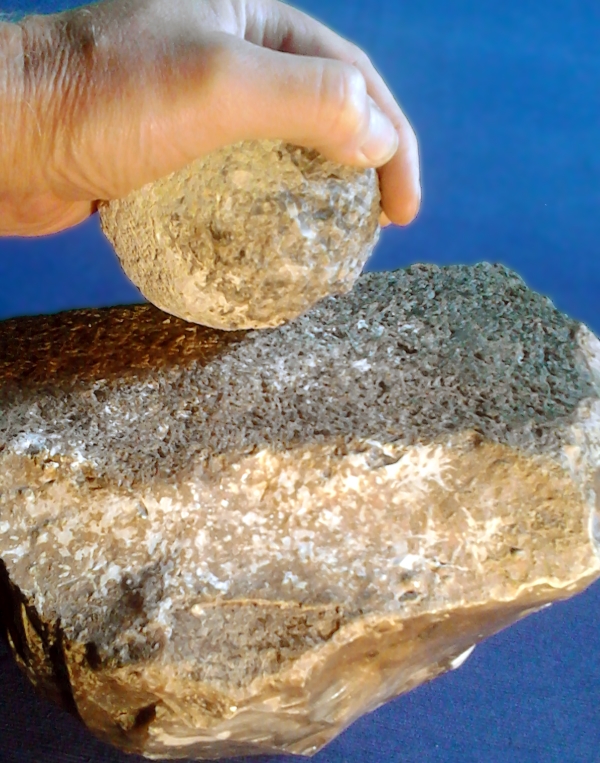
Today’s VM_365 image shows two artefacts from Iron Age sites in Thanet. One is a large stone with a flat grinding surface, found at a large Iron Age settlement site at South Dumpton Down near Broadstairs. The second object is a spherical rubbing or grinding stone, which fits comfortably into the hand, which comes from a contemporary site at North Foreland, Broadstairs.
The two objects demonstrate how local materials, in this case flints from seams within the chalk that underlies both sites, were adapted for tools associated with daily activities. Both objects were transformed by regular working into something quite different to their irregular natural state.
The surface of the larger flint was pecked and ground to a horizontal surface by the rubbing and grinding action that may have taken place every day. The smaller flint was chipped and ground into a sphere through a similar regular striking action, possibly while it was used as a rubbing stone used on a similar flattened surface. Rotating the object in the hand for comfort probably created the spherical shape over time.
The combination of the two objects, under the power of a human hand, created an abrasive process, which was possibly used to rub grains between the stone to make flour, or to grind other foodstuff into powders or pastes.